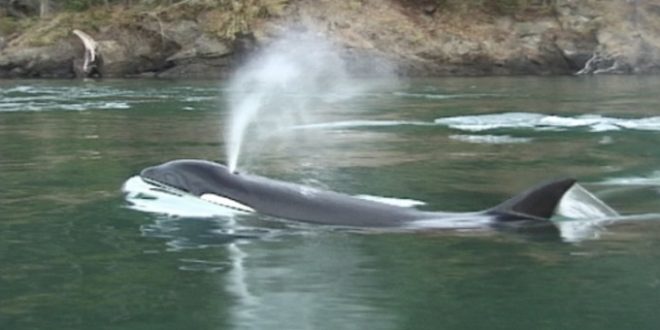While many animals become less fertile as they age, only three species—humans, pilot whales, and killer whales—have females that regularly live well beyond their reproductive prime. These are the only species where we see grandmas acting like grandmas: they’ve long stopped producing offspring of their own, so they pivot to helping care for their children’s children.
According to a new Current Biology study, killer whales go through menopause to avoid reproduction competition with their daughters, allowing them to instead share knowledge to help their family succeed. This explanation also sheds light on why humans share this unique trait with toothed whales.
The whales’ unique social structure, combined with the benefits that older females provide the pod, have created a perfect crucible for menopause to evolve, says study lead author and University of Exeter behavioural ecologist Darren Croft.
For most animals, bearing as many offspring as possible over your lifetime is the best way to ensure your evolutionary legacy, or “fitness”. Biologists have long sought to explain why menopausal animals forgo this seemingly sensible strategy.
One explanation – dubbed the “grandmother hypothesis” – suggests that females stop reproducing to assist their children bear grandchildren.
This does provide some evolutionary benefit, but it’s not as potent as bearing your own offspring, nor does it explain why females sacrifice up to half their reproductive life. Female orcas, for instance, bear their last calf in their 30s or 40s, but can live well into their 90s.
The more recent “reproductive conflict hypothesis” suggests that competition between females might play a role.
To see if this was the case, Croft and colleagues examined an “incredible dataset” of more than 500 births over 43 years in salmon-eating orcas living off the west coast of North America.
Overall, a mother’s age had no bearing on whether or not a calf made it to adulthood. But this wasn’t the case when mothers and daughters bred at the same time, when calves born to older females were 1.7 times more likely to die.
Croft puts this down to social structure. Male and female orcas stay with their family – or “pod” – for life, but mate with whales from other pods. This means young females aren’t related to pod members as much as older females, who have already given birth to multiple calves.
So it makes sense for a young female to compete tooth and flipper for a share of resources that improve her calf’s chances of survival. An older female, in contrast, gains from providing for the whole pod – sharing food and leading them to fertile fishing grounds. This is especially so for her sons, who can father more grandchildren than her slower-reproducing daughters.
“It’s this tug of war between old and young females over resources,” Croft says.
Agencies/Canadajournal
 Canada Journal – News of the World Articles and videos to bring you the biggest Canadian news stories from across the country every day
Canada Journal – News of the World Articles and videos to bring you the biggest Canadian news stories from across the country every day



